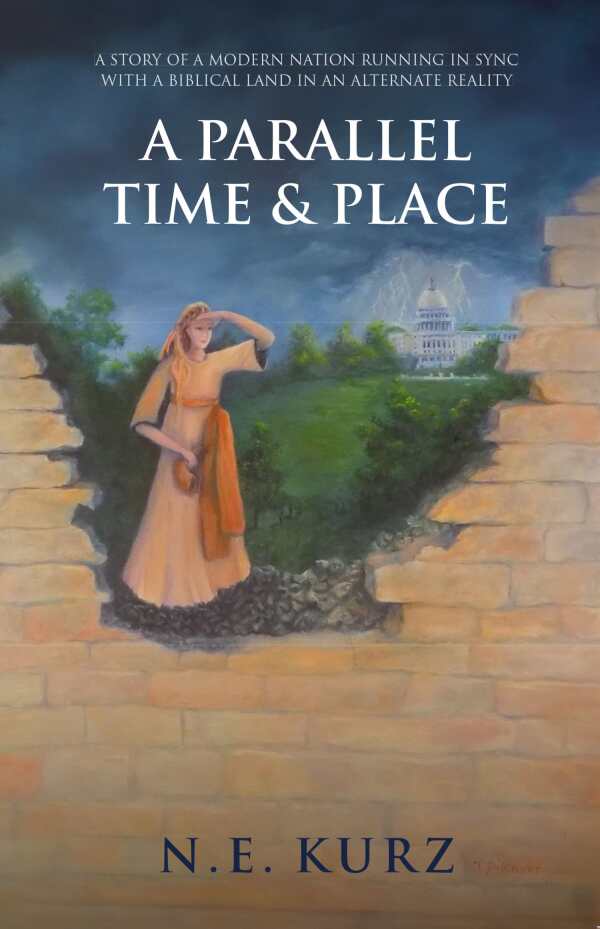A Parallel Time & Place
A Story of a Modern Nation Running in Sync with a Biblical Land in an Alternate Reality
In the trilogy-opening Christian novel A Parallel Time & Place, an intriguing woman is called to serve as religious witness across centuries.
A sweeping narrative of faith and destiny, N. E. Kurz’s historical novel A Parallel Time & Place blends biblical allegory with speculative imagination.
Centered in an ambitious dialogue between the ancient world and the modern age, this is the story of a woman’s unexpected journey through time. Beginning in a nation under strain, it illuminates patterns of belief, warning, and renewal. Its contemporary setting mirrors that of of biblical Judah, where complacency and corruption marked the years leading to exile. Into this tension steps Saphah, an ordinary woman charged with the extraordinary role of watchwoman. Her mission is not confined to her own day: Guided by angels, she is transported to Jerusalem on the brink of Babylonian conquest in 598 BCE. The collapse of that kingdom becomes the lens through which themes of warning and redemption are explored.
Reconstructing life in Jerusalem at the moment of crisis, the text is detailed and well structured, with mentions of the architecture, customs, and social divisions of the time. The tension is palpable as prophecy collides with politics and human resilience meets with divine decrees. Saphah’s presence in that period is invigorating, too. Uncertain of her calling, she grows into her task through outside instruction and her struggles. Her teachers are the angelic messengers Malak and Nahal, who supply both narrative momentum and theological structure. Through them, the story establishes the idea of the watchperson as one who must see beyond the present moment and hold a community accountable to a higher truth. Saphah’s growth is both internal and external; she comes to embody the theme of vigilance across generations.
The prose elevates the book’s dual focus on history and theology, balancing exposition and imagery all the while. Scenes of daily life and of the city under siege are drawn with striking clarity. People’s conversations have scriptural cadences, yet they still remain tethered to human dimensions of fear, doubt, and conviction. However, the book’s passages of theological reflection often extend too long, slowing the book’s momentum. Further, some characters function more as conduits of doctrine than as independent figures, present to reinforce the allegorical design of the story without being sufficiently developed on their own merit.
Still, the story is effective at embodying the past as a warning, suggesting that patterns of decline repeat when human vigilance fades and casting faith not as an individual refuge but as a communal charge with consequences for whole nations. Though its pace sometimes yields to the weight of its instruction, it is a cohesive and purposeful tale, setting a clear foundation for volumes to come.
In the historical novel A Parallel Time & Place, a woman bound by her spiritual duties witnesses the collapse of a past society.
Reviewed by
John M. Murray
Disclosure: This article is not an endorsement, but a review. The publisher of this book provided free copies of the book and paid a small fee to have their book reviewed by a professional reviewer. Foreword Reviews and Clarion Reviews make no guarantee that the publisher will receive a positive review. Foreword Magazine, Inc. is disclosing this in accordance with the Federal Trade Commission’s 16 CFR, Part 255.

